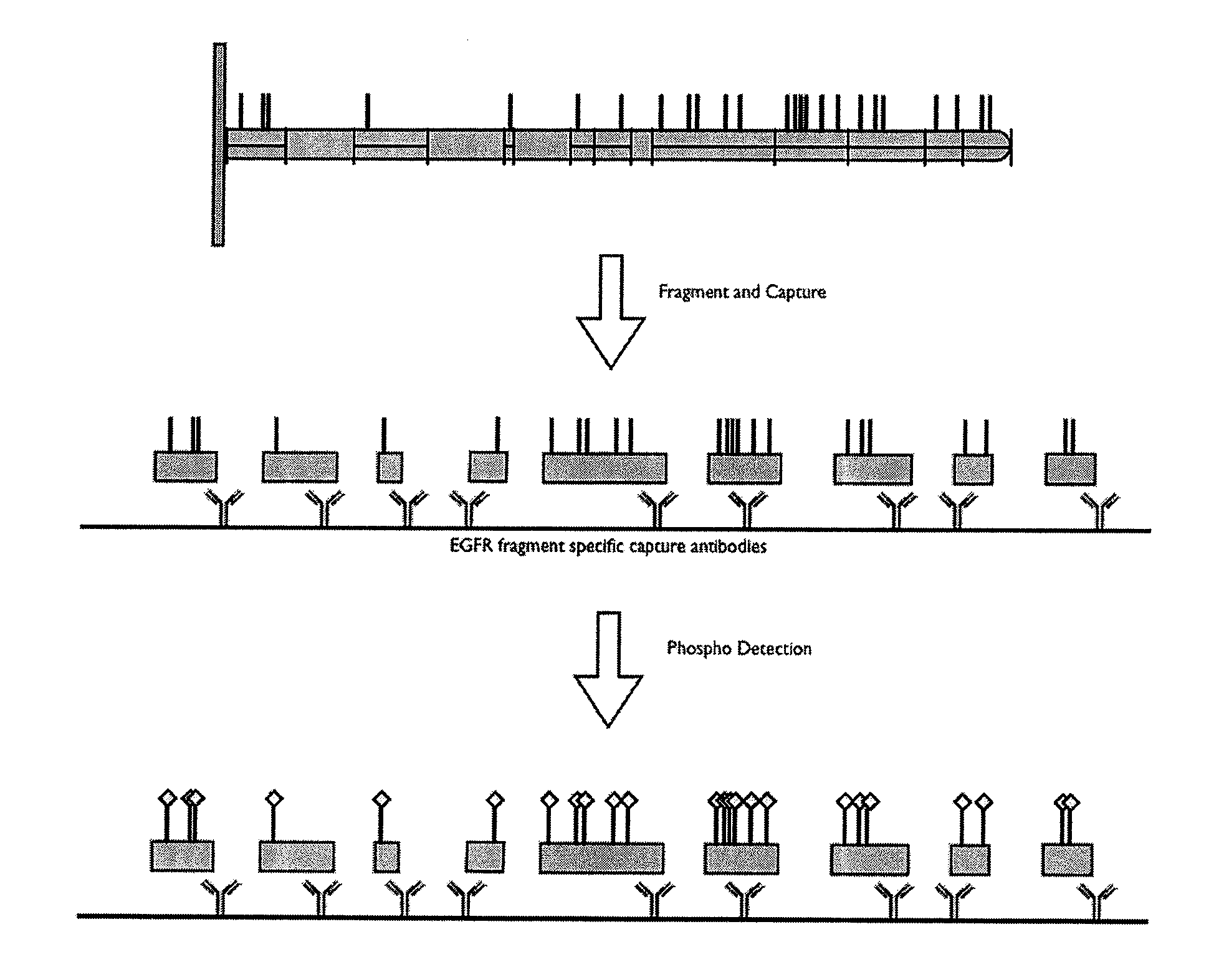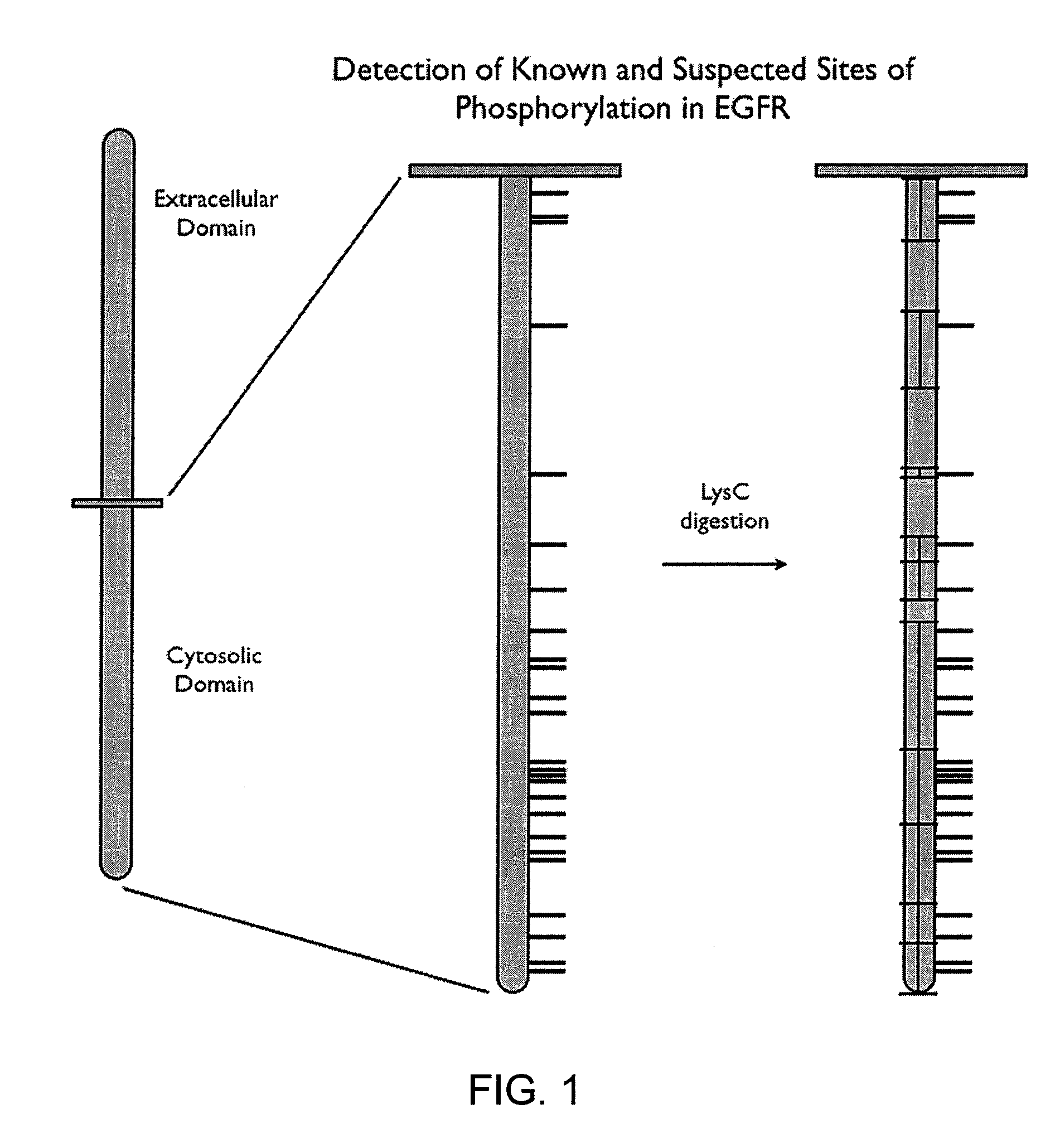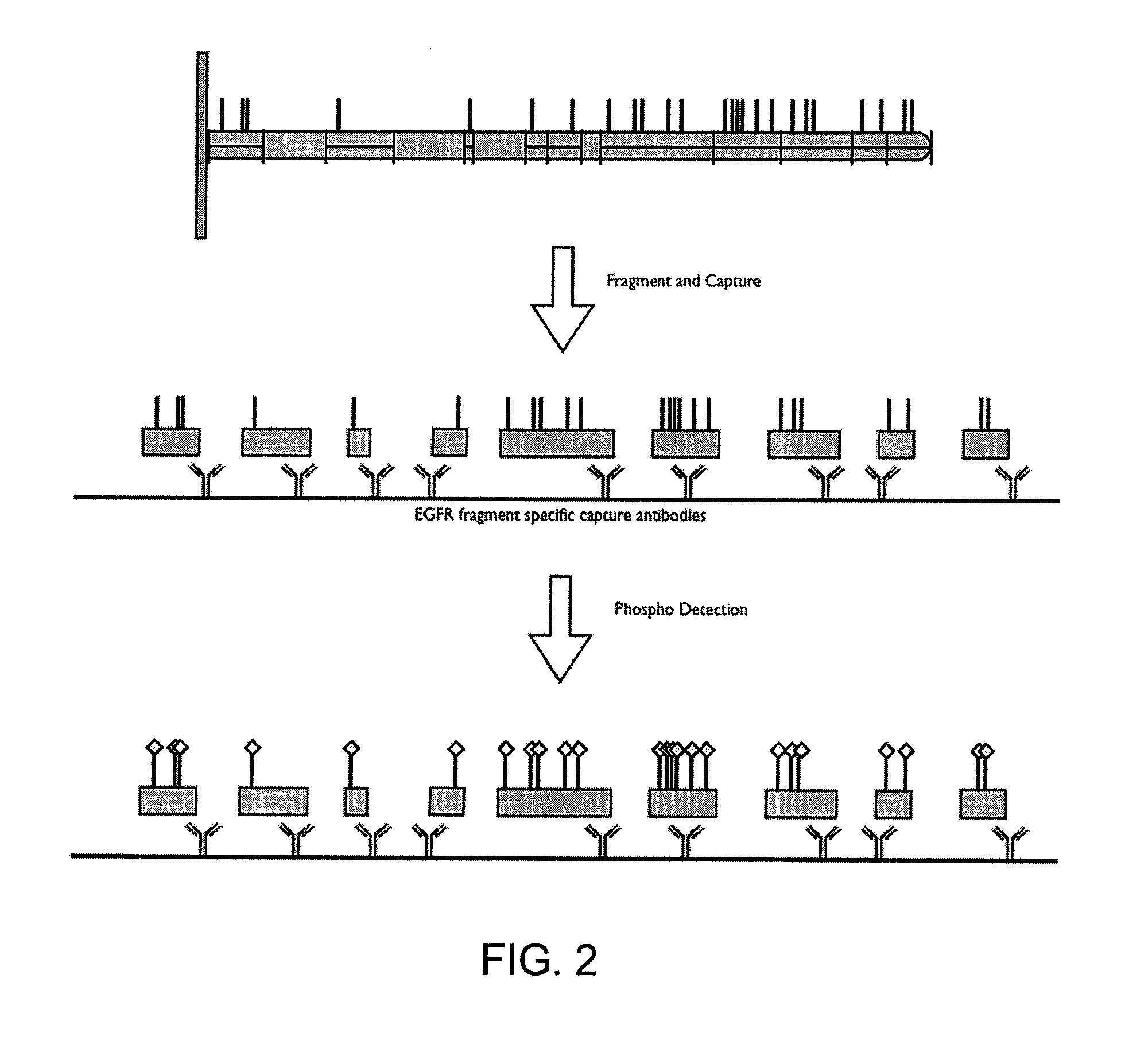Post translational modification pattern analysis
a translational modification and pattern analysis technology, applied in the field of post translational modification pattern analysis, can solve the problems of poor suitability of ms-based approaches for routine measurement, high equipment capital cost, and tedious and specially designed sample preparation techniques to reduce the complexity of mixtures, and achieve the effect of enhancing the flexibility of methods
- Summary
- Abstract
- Description
- Claims
- Application Information
AI Technical Summary
Benefits of technology
Problems solved by technology
Method used
Image
Examples
example 1
Generation of Plural Peptide Fragments Containing Potential Post-Translational Modification Sites and Antibodies to Detect the Plural Fragments
[0373]The following example shows how a post translational pattern within one protein or within a plurality of proteins can be determined. The sequences of eleven proteins were analyzed to determine Lys-C cleavage sites and tyrosine sites (pY sites) known to be phosphorylated under certain cellular conditions, as shown in Table 3. The first column in the table identifies the proteins that were analyzed; the second column identifies tyrosine residues of interest on each respective protein; and the third column identifies respective protein fragments generated from Lys-C digestion that contain the pY sites (underlined Y's in third column).
TABLE 3Identification of protein post translational modification sites, fragmentscontaining the sites, and epitopes on each fragmentProteinpY SiteLys C FragmentpI3Kp110dY485GELLNPTGTVRSNPNTDSAAALLICLPEVAPHPVYY...
example 2
Detection and Quantitation of Phosphorylation at Specific Sites within the EGFR Protein in Response to Epidermal Growth Factor Activation in A431 Human Cancer Cells
[0376]The present invention allows for the study of site specific phosphorylation events within a protein or within a plurality of proteins using a sandwich assay. Since dysregulation of the EGFR signaling pathway has been observed in cells from many human disease states, a large emphasis in drug development has been placed on inhibiting aberrant EGFR signaling. However, there are multiple sites of phosphorylation that may be affected and the field would clearly benefit from a better understanding of any differential events that occur at particular phosphosites involved in response to different stimuli. This example describes a multiplexed sandwich immunoassay capable of detecting and quantitating a post translational modifications at specific sites within an EGFR protein.
[0377]Materials and Methods
[0378]A. Cell Culture
[0...
PUM
 Login to View More
Login to View More Abstract
Description
Claims
Application Information
 Login to View More
Login to View More - R&D
- Intellectual Property
- Life Sciences
- Materials
- Tech Scout
- Unparalleled Data Quality
- Higher Quality Content
- 60% Fewer Hallucinations
Browse by: Latest US Patents, China's latest patents, Technical Efficacy Thesaurus, Application Domain, Technology Topic, Popular Technical Reports.
© 2025 PatSnap. All rights reserved.Legal|Privacy policy|Modern Slavery Act Transparency Statement|Sitemap|About US| Contact US: help@patsnap.com



